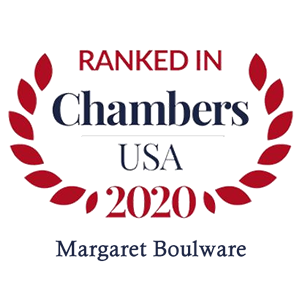There are several different types of intellectual property protection that are available, including patents, trade secrets, copyrights, and trademarks. Although there may be some similarities among these kinds of intellectual property protection, they are different and serve different purposes.
Patents
Patents provide the right to exclude others from making, using, or selling a claimed invention and the right is generally good for 20 years from filing. However, the process of obtaining a patent is quite rigorous, requiring examination where the applicant must show utility, novelty and non-obviousness. Further, the process can be quite expensive, requiring tens of thousands of dollars.
Trade Secrets
A trade secret includes any secret information that a company deems of value. It could range from a secret formula (for example the Coke® recipe) to customer lists to design drawings. A trade secret can be protected forever, so long as the information does not become publicly available. Further, there is no cost to obtaining a trade secret, beyond the costs of the security measures needed to keep the information secret. Trade secrets are only useful where a product cannot easily be reverse engineered.
Trademark
A trademark is a word, name, symbol, or device that is used in commerce with goods and/or services to indicate the source origin to distinguish them from others. A service mark is the same as a trademark except that it identifies and distinguishes the source of a service rather than a product. The terms “trademark” and “mark” are commonly used to refer to both trademarks and service marks. A special type of trademark is trade dress, which is a sub-category of trademark protection that protects non-functional image and overall appearance of a business or its products.
Trademark rights may be used to prevent others from using a confusingly similar mark, but not to prevent others from making the same goods or from selling the same goods or services under a clearly different mark.
Trademarks that are used in interstate or foreign commerce may be registered with the U.S. Patent and Trademark Office (“PTO”), as well as with state offices, and the process is less expensive than obtaining a patent. However, trademark rights exist in the U. S. even if the mark is not registered with the PTO. The federal registration is valuable however, because it confers additional rights and puts those in the U.S. on notice of your trademark rights.
The procedure for obtaining a trademark is simpler than that of obtaining a patent. An applicant must show actual use in commerce, and that the trademark is not confusingly similar to another mark, and not descriptive or generic. An application can be made based on intent to use in commerce.
A trademark can last forever, as long as the owner takes steps to control the quality of the goods associated with the trademark, and to prevent the use of the mark from becoming generic. For example, aspirin used to be a brand name for a acetylsalicylic acid (ASA), but it is now used generically in the US to describe any ASA containing product.
Copyright
Copyright is a form of protection provided to the authors of “original works of authorship” including literary, dramatic, musical, artistic, software and certain other works, both published and unpublished.
Copyright generally gives the owner the exclusive right to reproduce the copyrighted work, to prepare derivative works, to distribute copies or phonorecords of the copyrighted work, or to perform or display the copyrighted work publicly.
Copyright is generally available for the life of the author plus 70 years. For an anonymous work, or a work made for hire, the copyright endures for a term of 95 years from the year of its first publication or a term of 120 years from the year of its creation, whichever expires first.
The copyright protects the form of expression rather than the subject matter of the work. For example, a description of a machine could be copyrighted, but this would only prevent others from copying the actual description; it would not prevent others from writing a description of their own or from making and using the machine.
Copyrights are registered by the Copyright Office of the Library of Congress. However, the copyright exists independently of registration, and the registration only provides certain procedural rights and provides notice to third parties of your copyright claims. Registration is very inexpensive, although there is a mandatory deposit requirement, and there is no examination of the registration.
IP OVERLAP
All forms of Intellectual Property can be used to protect different aspects of the same products. For example, a drug may have a patent on the actual chemical compound in the drug, but certain special formulation techniques may be kept a trade secret. The brand name of the drug would be protected by trademark, and the advertisements may be protected by copyright. The unique shape of the pill may even be protected by design patent. Consult with attorneys at Boulware & Valoir for a complete discussion of how your company can use these various forms of Intellectual Property protection to protect its products.
IP SUMMARY
The following table compares and contrasts the basic types of IP protection.


